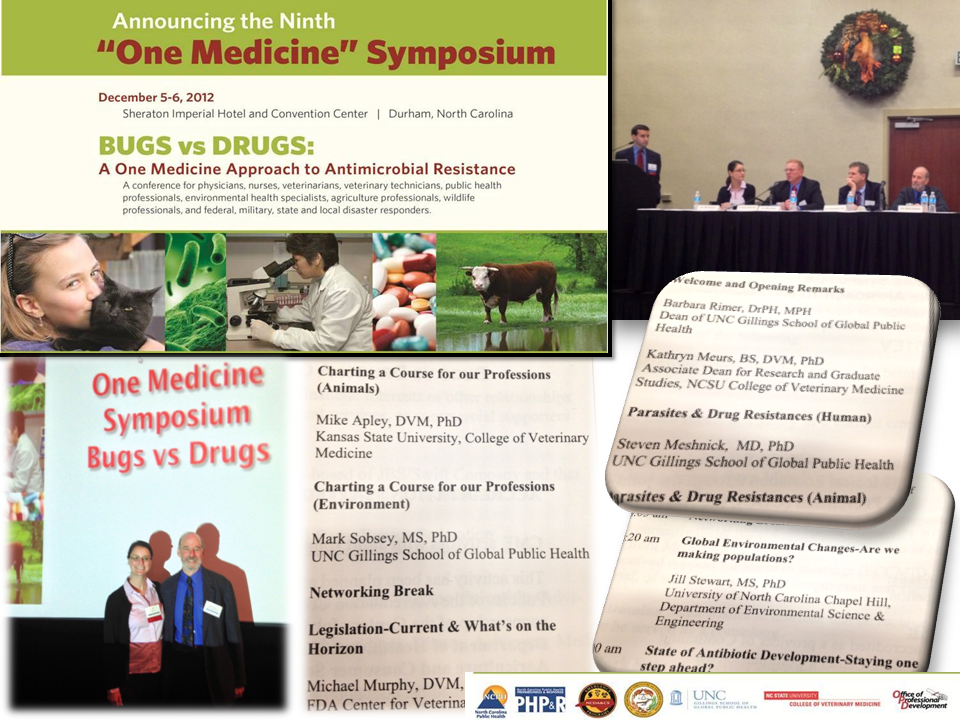Related Posts

This morning, I welcomed participants to the second day of the One Medicine Symposium, “Bugs vs. Drugs,” which focused on the origins and impacts of antimicrobial resistance on human and animal health. In the last week we’ve had several discussions about our School’s roles in global public health and local public health. Some people think we have to be one or the other. We’re firmly committed to both!
“Even when their specialties take them around the world, [Gillings School of Global Public Health faculty members] come back and work on North Carolina’s problems,” said Megan Davies, MD, state epidemiologist and epidemiology section chief. Dr. Davies served as session moderator.
Drug resistance is a great example of the inter-relationship of global and local concerns. Ironically, as Dr. Steve Meshnick said, the more a drug is used, the faster drug resistance develops.
Drug resistance to various kinds of drugs, including antibiotics, can occur because of how infections are transmitted around the world and how use of antibiotics and other drugs around the world contribute to drug resistance.
I’m so grateful to Christin Daniels for her role in planning the meeting and to Drs. Meshnick, Leah Devlin, Jill Stewart and Mark Sobsey for presenting at the meeting.
Humans, animals and the environment are connected in interconnected, complex and intimate ways. One Health is a visionary effort to break down the barriers between these three areas of study.
Happy Monday, Barbara

